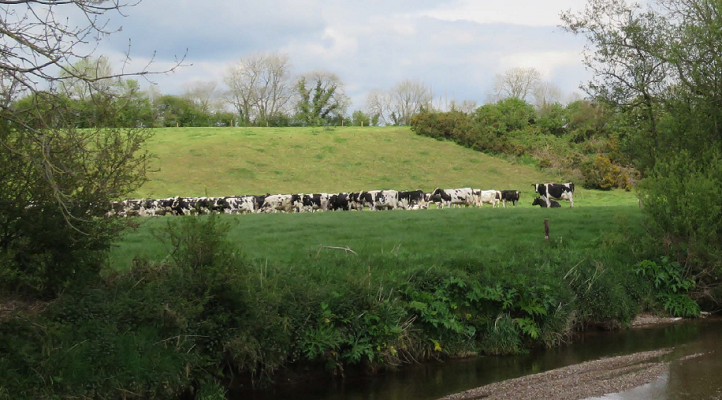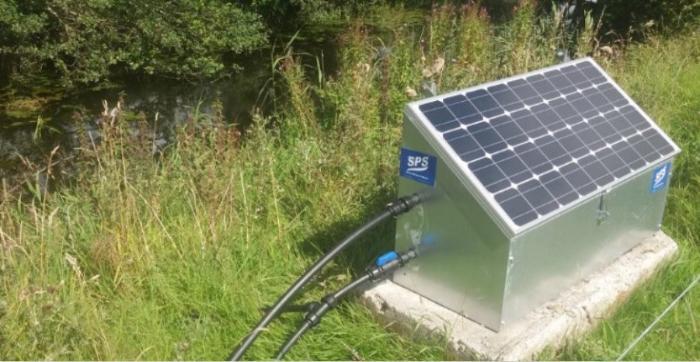31 August 2024
Reducing Your Farm’s Impact on Water Quality This Autumn

Richard Gill writes about how farmers can protect water quality by implementing a range of practices, from optimal fertiliser application to investing in infrastructure like fencing and solar-powered water pumps.
Farmers can play a crucial role in safeguarding water quality by implementing various practices on their farms. Farmers can implement the measures that are most appropriate for their farm and farming enterprise. While some of these measures are straightforward and can be implemented with minimal investment, others may require more substantial investment and careful planning.
One of the easiest ways that farmers can reduce their impact on water quality is by applying organic and chemical fertilisers to land when conditions are optimal. Fertilisers shouldn’t spread on land if heavy rainfall is forecasted as this will result in nutrients being leached into watercourses. August is a good month to spread the last round of chemical fertiliser to get the best value for money as soil temperatures remain high. The effectiveness of fertiliser will begin to drop as we enter September and get closer to the closed period for spreading chemical fertiliser, which begins on 15th September. Slurry tanks should also be emptied well in advance of the closed season to get the best response possible from this valuable resource. This will also ensure that tanks are empty before weather and ground conditions deteriorate as we enter autumn. Slurry should be targeted to fields which are low in Phosphorus and Potassium such as silage fields. Increasing soil fertility on this land will positively impact water quality and increase grass production. Slurry should be applied using low-emission slurry spreading (LESS) to maximise utilisation and limit losses. One thousand gallons of slurry at 6% dry matter is equivalent to a 50kg bag of 9-5-32 fertiliser when applied using LESS. To protect water quality, buffer zones must be adhered to at all times when spreading slurry and chemical fertilisers. A buffer zone is a no spread area along a watercourse. Chemical fertilisers must not be spread on land within 3 metres of watercourses and slurry must not be spread on land within 5 metres of watercourses. It is important to note that the buffer zone for slurry spreading increases to 10 metres for the first and last 2 weeks of the spreading season.
Now is a good time for farmers to review soil sample results, particularly the pH levels of soils on their farms. If soils have low pH levels, lime application should be considered. A target pH for grassland is between 6.3 and 6.5. Late summer and autumn are good times to apply lime to grassland as it allows time for the lime to work over the winter. Recent soil test results will show the rate of lime that is required for each field depending on soil type and soil pH. The pH of soil can affect the uptake of nutrients in the soil and will affect the amount of nutrients that enters watercourses through runoff and leaching. Applying lime to soil with low pH levels will have a positive effect on both grass production and water quality.
The measures outlined above do not require major investment and many farmers will already be implementing these practices on their farms. There is also a range of measures that farmers can implement to reduce their farms impact on water quality which will require larger investment. Among these, measures such as fencing off watercourses and installing water pumps are particularly effective. Fencing off water courses prevents livestock from having direct access to streams, rivers and other waterbodies which reduces the risk of contamination from manure and prevents bank erosion. Adding riparian margins between the grazing area and the watercourse will reduce this risk further. Riparian margins are buffer strips of vegetation alongside the watercourse which helps to filter out nutrients and pollutants before they reach the water.
Traditionally, watercourses were used as drinking water sources for livestock on many farms, however this practice can negatively affect water quality. Installing solar-powered water pumps and nose pumps provides livestock with clean drinking water without requiring direct access to watercourses. This not only improves water quality but also offers additional benefits. Solar-powered water pumps enable farmers to divide fields into multiple paddocks, as each pump can supply several water troughs. This will allow farmers to implement a rotational grazing system on their farms which will increase overall farm productivity.

Solar powered water pump
The Targeted Agricultural Modernisation Scheme (TAMS) offers valuable financial support for farmers investing in these sustainable practices. TAMS funding can be used for a variety of investments, including bovine fencing, solar-powered water pumps and nose pumps. TAMS grants are available at a rate of 60% for women farmers and young trained farmers and at 40% for all other farmers. By taking advantage of these funds, farmers can make critical infrastructure improvements that benefit both water quality and farm productivity.
